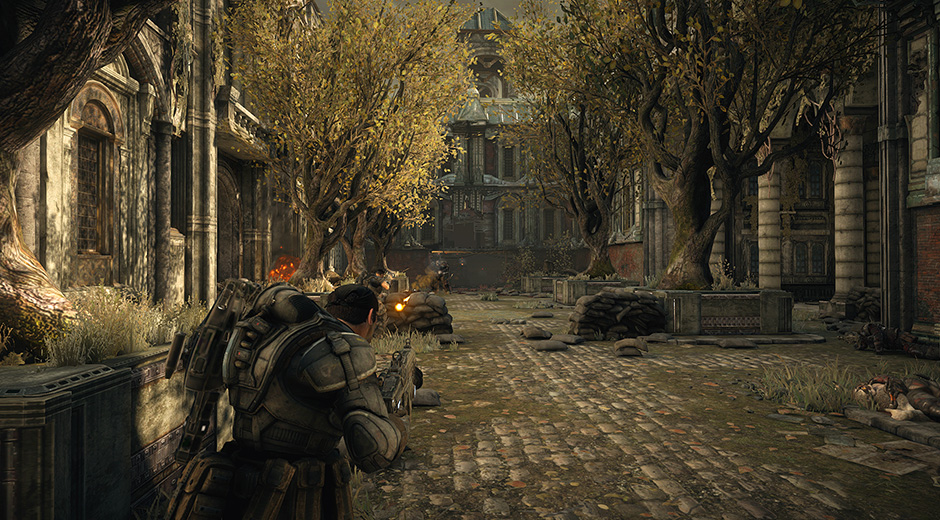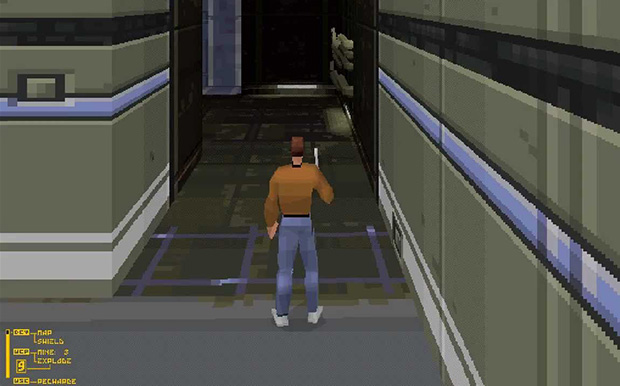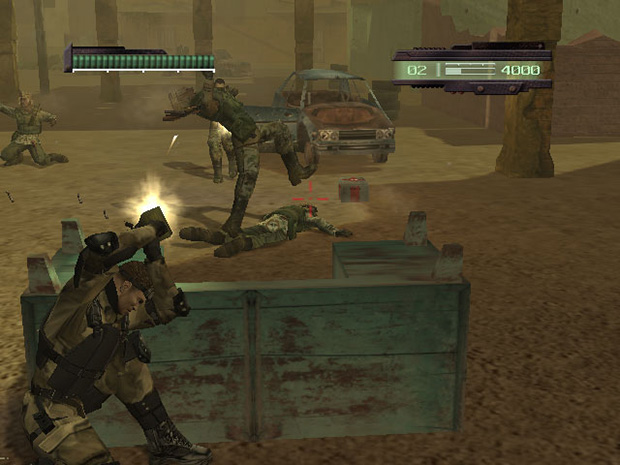
Know Your Genres: Third-Person Shooters
Just what do we really mean when we talk about “game genres,” anyway? Sure, you’ve probably seen that “fans of the genre will enjoy this” phrase in umpteen game reviews, but the truth is that the most durable game genres have walked some long, ever-evolving, and very interesting roads over the past several decades. In this weekly series, Xbox Wire’s editorial team will break down exactly what shaped your favorite genres, why they’re so timelessly awesome, and where they’re headed – while providing you with some expert advice on the past and modern classics that you should check out!
The concept of a “third-person shooter” is pretty self-explanatory… as long as you think of it in contrast to first-person shooters. To wit, a third-person shooter is a game focused on shooting where, instead of seeing through the main character’s eyes, you see the main character from an external perspective. Generally, this means you’re peering over the player-character’s shoulder – though, as we’ll see, that’s far from always the case.
The Past
Back in prehistoric times (by which we mean the late 1970s and early ‘80s), plenty of games existed that could technically be considered third-person shooters. When you think about it, pretty much any game that shows its character onscreen and involves shooting meets the most basic criteria. But the behind-the-character view was fairly rare before the advent of inexpensive 3D-graphics technology. Classics like Contra featured some scenes that would look somewhat familiar today, and arcade legends like Space Harrier and Cabal offered over-the-shoulder shooting.
It wasn’t until 1995 that we got a glimpse of third-person shooters in a form akin to what we see now. 3D graphics cards were becoming standard on home PCs, and the Sega Saturn and Sony PlayStation had just launched, bringing polygonal technology into the home console space. Into this brave new world jumped Fade to Black, the sequel to the legendary 1992 platform-shooter Flashback: The Quest for Identity. In Fade to Black, everything was presented in three glorious dimensions, with the camera positioned behind the main character as he blasted through oncoming enemies. Sure, its simplistic polygons may look laughable now, but it was a notable feat of technology for the time. Unfortunately, while it enjoyed solid reviews, Fade to Black failed to make more than a slight blip on players’ radar.

So, while Fade to Black was something of a trendsetter, it wouldn’t be the one to popularize the third-person shooter; you can thank Lara Croft for that. While shooting certainly wasn’t the game’s primary focus, the original Tomb Raider mixed a healthy dose in with its 3D exploration, platforming, and puzzle-solving. And because Tomb Raider was one of the first games to offer free-roaming exploration in a fully three-dimensional space – and because it became absurdly popular – it set the template for many, many games to come.
Those early days proved a bit rocky as developers began to learn what they could do with a box full of polygons. The venerable Contra, for example, experimented with the third-person shooter format with Legacy of War and The Contra Adventure – to disastrous results – and Duke Nukem tried the same thing with Time to Kill, Zero Hour, and Land of the Babes… to equally disastrous results. But games like 1997’s MDK and 1999’s Jet Force Gemini (the latter now available on Xbox One as part of Rare Replay) began to push the genre forward, introducing refinements to controls and concepts that would gain widespread use in the years to come.
The dawn of the new millennium brought with it new technology, leading to a significant renaissance in the third-person shooter genre. Leading the charge was 2001’s Max Payne, with its noir hook and stylish slow-mo “bullet time” shooting. 2002 would bring with it another long-running series, Sony’s SOCOM: U.S. Navy SEALs, which delivered a third-person take on the realistic military shooter. That same year also saw the debut of super-spy Sam Fisher in the stealth-focused shooter Splinter Cell.
The Present
The third-person shooter as we know it today, however, owes a great deal to a lesser-known game that arrived on Xbox and Windows PC in 2003: Kill Switch. Where previous games had tinkered with other elements of the format, Kill Switch’s revolutionary use of cover set a new standard. By tapping a button, the main character would snap into cover, where he could pop out at will and even fire blindly above or around it. The concept of “sticky” cover, and the focus on cover as a dominant element in level design, sent ripples through the genre.

One of the biggest ripples came in the form of a 2006 release you may have heard of: Gears of War, which featured a cover system very similar to Kill Switch’s, thanks to the latter’s lead designer serving as part of the Gears team. Third-person shooters like 2007’s Uncharted: Drake’s Fortune and 2008’s Army of Two featured similar cover systems, as just two high-profile examples (and even first-person shooters started to get in on the action, with games like 2008’s Tom Clancy’s Rainbow Six: Vegas 2 and 2011’s Deus Ex: Human Revolution going so far as to switch to a third-person view when characters enter cover).
For something a little closer to the immediate present, of course, we need only look to Gears of War: Ultimate Edition. This remastered and modernized version of the genre-defining classic arrived on Xbox One in August.
The Future
Only time will tell what new innovation is on the horizon, but a bevy of upcoming third-person shooters have got us psyched to find out. Chief among them is, of course, Gears of War 4, slated for release in the 2016 holiday season. But we’re also salivating for the massive, cloud-powered destruction of Crackdown 3, where multiplayer will begin in 2016.

Closer still is the expected March 2016 release of Tom Clancy’s The Division, which will bring the trademark Clancy day-after-tomorrow tech into a multiplayer-focused version of New York City. And that’s not the only Clancy third-person shooter that’s caught our interest; Tom Clancy’s Ghost Recon: Wildlands will send the titular Ghosts into a vast, varied, open-world take on Bolivia – whenever it actually releases.
But you won’t need to wait until next year – or beyond – for a new fix of sweet, sweet shooter action. Star Wars Battlefront, Just Cause 3, and Rise of the Tomb Raider are all hitting before the end of the year. You’re welcome.
